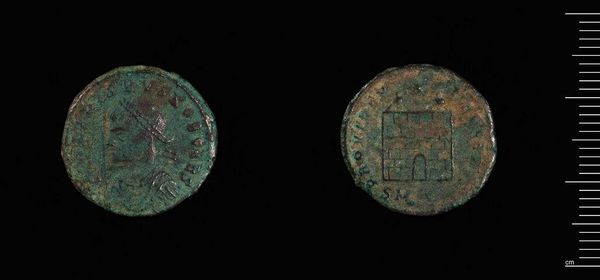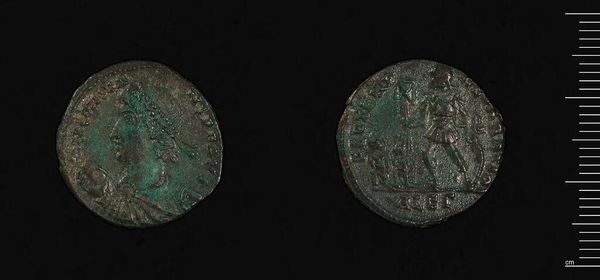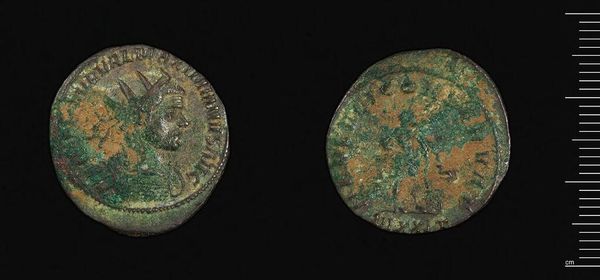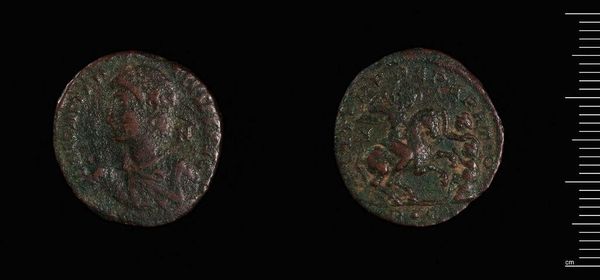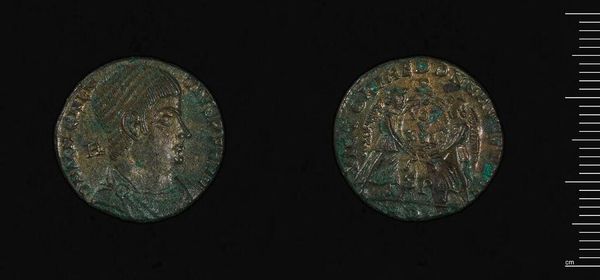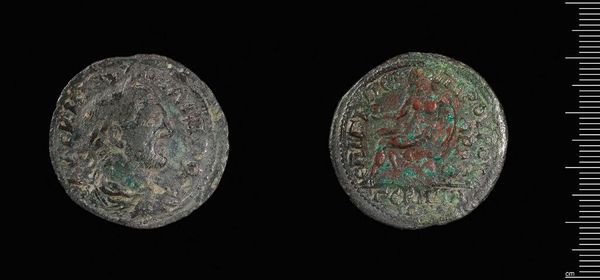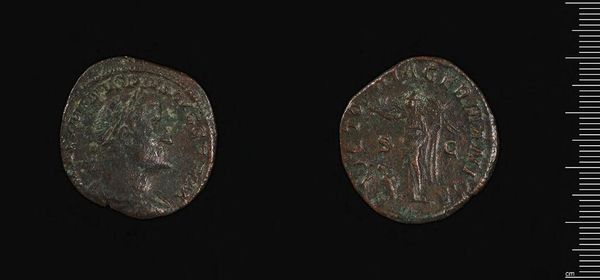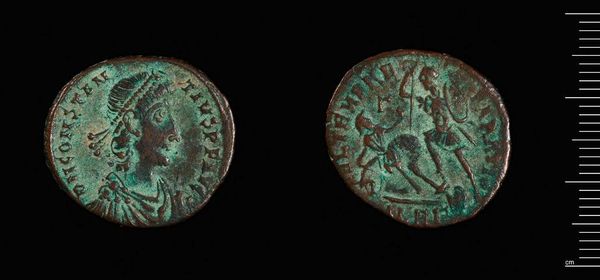
Dimensions: 15.59 g
Copyright: CC0 1.0
Curator: Here we have a Sestertius, a Roman coin, of Gordian III, part of the Harvard Art Museums collection. What do you think of it? Editor: It looks like it has been through a lot. The coin seems weathered, its features worn, but there's a strange beauty in that decay. It feels like a tangible link to a very different world. Curator: Indeed. These coins weren't just currency, they were propaganda. Gordian III, as emperor, controlled his image, how he was presented to his people. The coin becomes a tool of power. Editor: Absolutely. And who got to see and hold this power? Currency always circulates along very specific social pathways, reinforcing existing hierarchies. Who benefited from Gordian III’s image being disseminated? Curator: It's a message of stability and imperial authority to the soldiers and citizens. The image of the emperor was crucial to maintaining order and loyalty. Editor: And today it also prompts us to question whose stories are valued and preserved through our museums and collections. It's always about power, isn’t it? Curator: I suppose. It's fascinating to consider its journey from ancient Rome to our present day. Editor: Yes, it really does speak to the enduring nature of image and the constant struggle for representation.
Comments
No comments
Be the first to comment and join the conversation on the ultimate creative platform.

